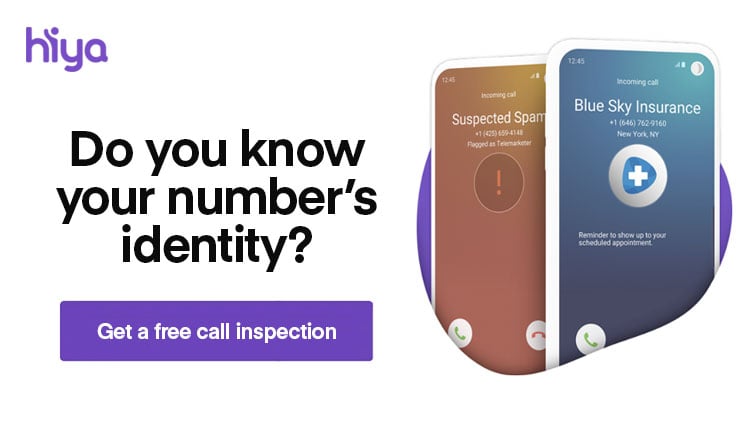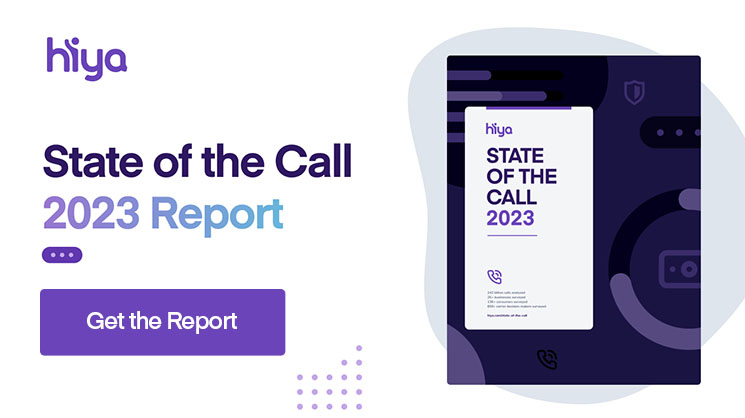Today Hiya released findings showing that as spam calls steadily rise, Americans continue to let their phone ring through to voicemail. The findings come on the heels of the newly announced Pallone-Thune TRACED Act, which aims to do away with the scourge of robocalls, having just passed nearly unanimously by the notoriously divided House of Representatives (next step is the Senate). According to Hiya’s analysis, spam calls grew to 54.6 billion in 2019, up 108% compared to the previous year, and consumers receive 14 spam calls per month, on average. Simultaneously, the number of calls being picked up remains at just under one in two (47%), one percentage point lower than when Hiya last released the State of the Phone Call report in June, but with a 5% decline since the beginning of the year.
“The fact that US spam calls grew 108% in 2019, coupled with the fact that less than half of all calls made to mobile phones are picked up, speaks to the impact this epidemic continues to have on Americans,” said Alex Algard, CEO of Hiya. “We applaud the joint efforts of the House and Senate who have been pushing hard over the past year for the Pallone-Thune TRACED Act to become law, and look forward to working alongside both regulators and our carrier partners in 2020 to collectively restore trust in the mobile call.”
Over the course of 2019, Hiya found that the average American makes and receives a total of 218 calls per month. Of these, 65% of calls identified as a legitimate business were picked up by consumers, lasting an average of 2 minutes and 58 seconds. While spam calls have made people wary of answering their phones, it’s still the preferred form of communication for many industries, from healthcare to financial services to education, which underscores the importance of accurately identifying both unwanted and wanted calls.
Below are some key findings from Hiya’s State of the Phone Call report, which includes data surrounding nuisance and scam calls:
Unwanted robocall stats and spam trends for the first half of the year :
- Total number of robocalls placed in 2019: 54.6 Billion
- Growth in Robocalls year over year: 108%
- Average number of monthly unwanted calls received per person: 14 (exactly double the 7 unwanted calls Americans were receiving at the end of 2018)
Average calls per month:
- On average, people make and receive a total of 218 calls per month
- Of those 218 total calls, 117 are calls received and 101 are calls made
- Of those calls received, 39%, or 46 of them, are from numbers “not saved to contacts”
Average incoming call pick-up rates:
- 47% of all calls received are answered
- 71% of calling numbers that are “saved in contacts” are answered
- 65% of calls identified with a business name are answered
- 18% of unidentified calls are answered
- 9% of calls identified as spam are answered
Typical duration of phone calls:
- Spam calls: 45 seconds
- Unidentified calls: 30 seconds
- Identified calls from businesses: 2 minutes and 58 seconds
- Calls from a user’s contact list: 5 minutes and 28 seconds
Top business industries calling mobile phones ranked in order of total call volume:
- Health Care: doctor’s offices, hospitals, pharmacies
- Financial Services: banks, credit unions, debt collectors
- Insurance: home, life, health, auto
- Government: schools, government agencies
- Automotive: car dealerships, car repair
For more details from the State of the Phone Call Report, including top unwanted call categories, top phone scams, top area codes targeted by spammers, and more, please click here.












